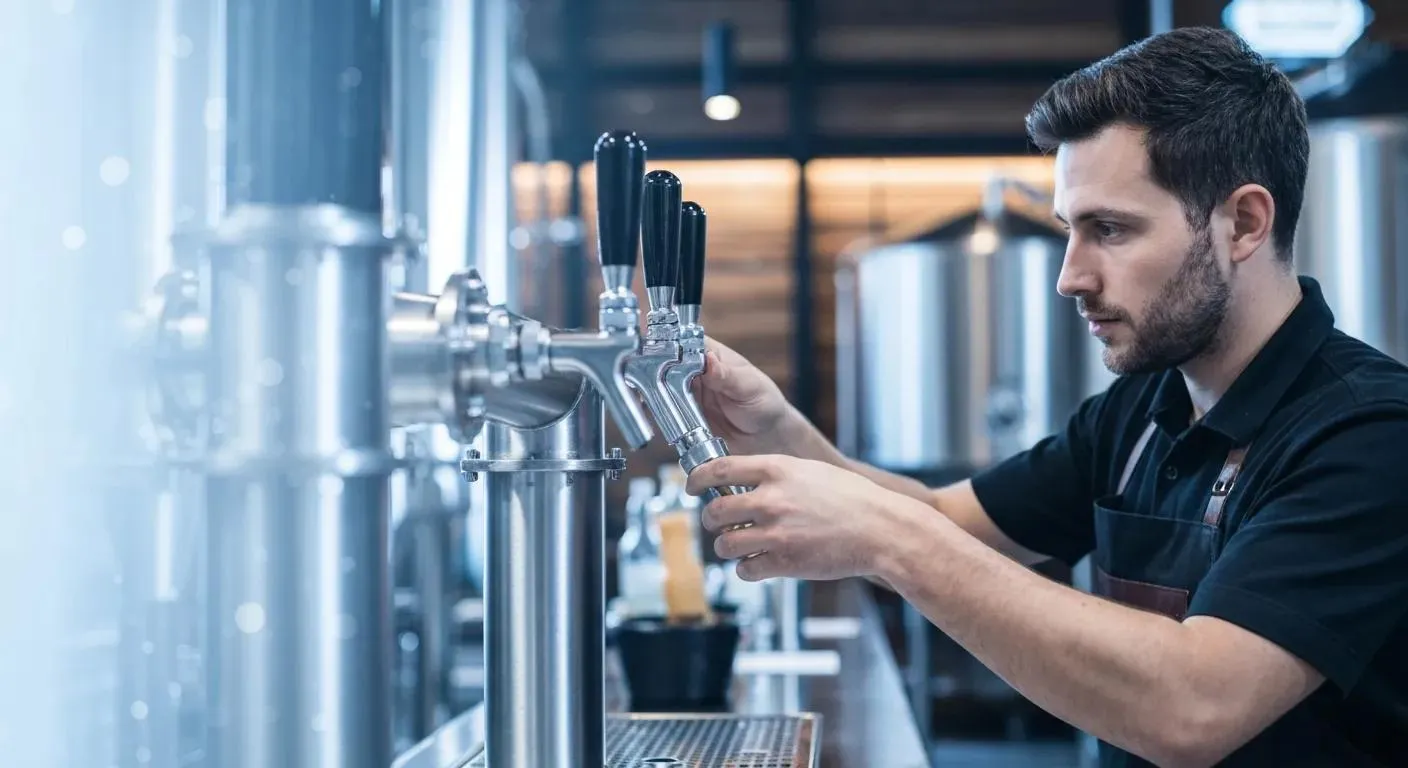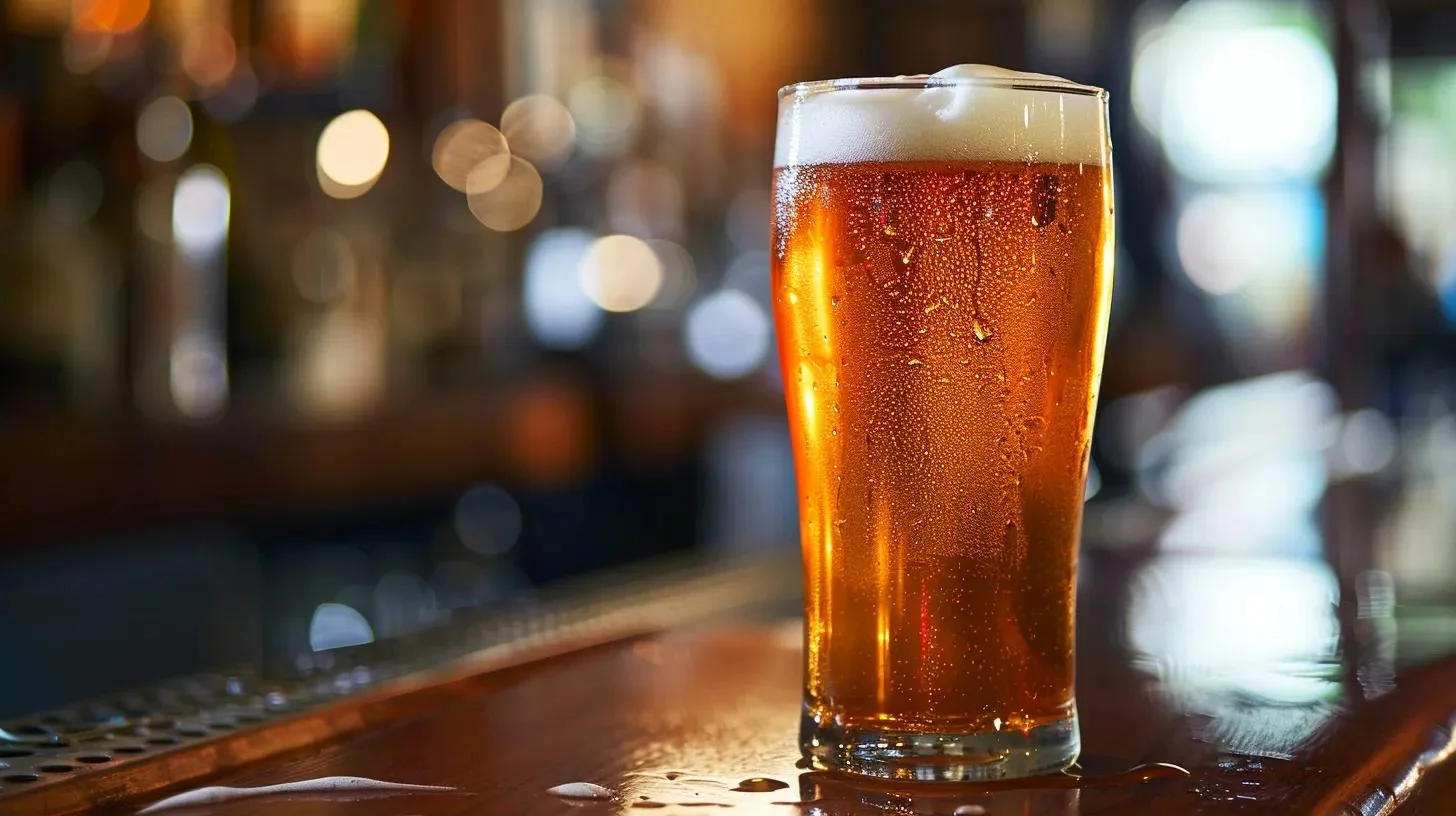Different Types of Beer Line Used: A Comprehensive Guide

Beer lines are a vital part of any draft beer dispensing system. Without them, transferring beer from the keg to the tap wouldn’t be possible. In addition to beer lines, air lines are also crucial for connecting CO2 cylinders to the system. Selecting the right beer and air line together is essential for maintaining the quality and flavor of the beer.
There are various materials used for beer lines, including vinyl, stainless steel, XFM, and barrier tubing. Each material has its own benefits and drawbacks, so it’s important to understand what each type offers to ensure optimal performance. Additionally, different sizes of beer lines, like 3/16 inch or 1/4 inch, are used depending on the beer’s carbonation level and the system setup.
Understanding the importance of temperature control in beer lines is crucial for delivering a perfect pour. Temperature affects the beer’s taste and carbonation, making it necessary to maintain the correct conditions throughout the entire dispensing process. Keeping the lines clean is equally important to avoid any contamination that could spoil the beer.

Key Takeaways
- Importance of proper beer line selection and material.
- Role of temperature control in beer dispensing.
- Necessity of regular cleaning and maintenance.
Fundamentals of Beer Line Systems
A well-functioning beer line system is crucial for preserving the quality and taste of draft beer. Understanding the components and maintaining the right temperature and pressure balance ensures a perfect pour every time one orders one.
Components of a Draft Beer System
A draft beer system is made of several key parts. The keg holds the beer under pressure and connects the beer to the system using a coupler.
Air lines link CO2 cylinders to secondary regulators, beer pumps, and couplers. These can be high-pressure braided lines or red jumper air lines.
The beer line itself is a tube, often made of vinyl, equipped with necessary features to carry beer from the keg to the tap handle. Different materials like stainless steel, XFM, and barrier tubing are used depending on the system and part of the system.
At the tap or faucet, beer is poured into glasses. Faucets are attached to draft towers, housing all the beer lines.
Importance of Temperature and Pressure Balance
Keeping the right temperature and pressure is key for maintaining beer quality.
A glycol cooling system or an air-cooled system ensures that beer is kept at the right temperature from keg to tap. Glycol beer lines are specifically designed for these systems to work, preventing temperature fluctuations.

CO2 pressure must be carefully regulated using secondary regulators. Too much pressure can cause foaming, while too little can result in flat beer.
Barrier beer lines are often used to prevent oxygen from entering, preserving beer freshness and flavor.
Balancing time, temperature and pressure ensures each pour is just right, keeping customers happy and waste to a minimum.
Materials and Design
Beer lines play a crucial role in the quality and safety of draft beer. The choice of material and design of beer line can impact cleanliness, flavor, and efficiency of beer dispensing.
Types of Beer Lines
Vinyl Beer Lines: These are common in home draft systems due to their flexibility and ease of cleaning. They are cost-effective and widely available. Vinyl beer lines, however, are more prone to oxygen infiltration, which can affect the taste of the beer over time. Each type of beer line is listed as an item in our inventory for easy selection.

Stainless Steel Lines: These are durable and resistant to corrosion. They are often used in commercial settings where there is a high volume of beer dispensed. Stainless steel lines maintain the flavor and quality of the beer but are less flexible and harder to clean compared to vinyl.

Barrier Tubing: Made of special material to prevent oxygen from entering the lines, barrier tubing is ideal for preserving the beer’s freshness. It is used in setups where long-term storage and minimal maintenance are priorities.

XtraFlexmaster Tubing: XtraFlexmaster® tubing is an advanced solution designed to maintain cleaner beer lines by reducing bacteria buildup through an ultrasmooth inner surface that slows biofilm formation. This highly flexible, kink-resistant, and brewery-approved tubing resists rot, swelling, and drying out while being unaffected by standard cleaning chemicals. It features excellent oxygen barrier capabilities.

Key Design Considerations for Durable Beer Lines
Insulation: Proper insulation is essential to set up and maintain the beer’s temperature as it moves from the keg to the tap. This is especially important in glycol systems where beer travels long distances.
Diameter and Length: The internal diameter and length of the beer line affect the flow and pressure of the beer. Incorrect sizing can lead to foaming or flat beer. Proper calculation ensures efficient and smooth pouring.
Material Choice: Choosing the right material is critical. Vinyl is flexible, durable and easy to handle, while stainless steel is durable and maintains flavor. Barrier tubing strikes a balance by preventing oxygen infiltration and maintaining freshness.
Cleaning and Maintenance: The design should facilitate easy cleaning to prevent buildup of residue and bacteria. Quick disconnects and smooth interior surfaces are beneficial features in this regard.
Why XFM is Better Than Vinyl For Jumper Lines in the Cooler
Oxygen Barrier: XFM tubing has a superior oxygen barrier compared to vinyl, which helps in keeping the beer fresh for a longer time. This feature is significant in preserving the quality of beer during storage in coolers.
Flexibility and Strength: XFM combines the flexibility of vinyl with the strength of more rigid materials. This makes it easier to handle while also being durable enough to withstand frequent use and movement.
Temperature Resistance: XFM is more resistant to temperature variations found in coolers. It ensures the beer stays at the right temperature without compromising the beer line's integrity.
By choosing XFM over vinyl for jumper lines in the cooler, the overall beer dispensing system can achieve better performance and longevity.
Temperature Control Systems
Temperature control is crucial for maintaining the taste and quality of draft beer. Systems like air-cooled and glycol systems ensure that beer is kept at an optimal temperature from keg to tap.
Air Line-Cooled vs Glycol Beer Systems
Air-Cooled Systems: Air-cooled systems are simpler and often used for shorter distances between keg and tap. They involve cooling the air around the beer lines to maintain the beer’s temperature. Typically, these setups are found in small bars or restaurants where the beer lines run directly into a walk-in cooler. The primary advantage is their relative cost-effectiveness and ease of installation.
Glycol Beer Systems: Glycol systems use a glycol chiller to circulate a glycol-water mixture through tubing alongside the beer lines. This setup is ideal for longer distances, such as in larger venues where the keg is far from the tap. Glycol-chilled systems provide more consistent temperature control over long distances, ensuring the beer stays at the perfect temperature until it reaches the tap, delivering a cold, refreshing pour every time.
Maintaining Consistent Temperature
Glycol Chiller Maintenance:
Regular maintenance of the glycol chiller is essential to prevent temperature fluctuations. These systems should be checked periodically to ensure the glycol mixture is at the correct concentration and that the chiller is operating efficiently.
Air-Cooled System Checks:
For air-cooled systems, maintaining consistent temperature requires ensuring that the walk-in cooler is functioning correctly and that the airflow around the beer lines is unobstructed. Regular inspections can help identify any issues with the cooling unit or blockages in the way of the air paths.
Temperature Monitoring:
Both systems benefit from digital temperature monitoring tools that provide real-time data on the beer's temperature throughout the system. This helps in quickly identifying and addressing any temperature variances before they affect the quality of the beer.
Cleaning and Maintenance
Regular cleaning and maintenance of beer lines are essential for preserving the quality and taste of the beer. This includes following specific cleaning procedures and addressing common contaminants that can affect the beer lines.
Procedures for Beer Line Cleaning
To ensure clean beer lines, follow a step-by-step process that includes different types of cleaning solutions. Start by gathering necessary equipment like safety goggles, and cleaning solutions. Begin by disconnecting the keg and releasing any beer from the lines.
Next, prepare a cleaning solution by mixing water with a line cleaning solution to work through the beer lines. Use an alkaline caustic cleaning solution to remove organic build-up like yeast and bacteria. Pump the cleaning solution through the beer lines, ensuring that it circulates thoroughly. Using a recirculating pump is best for this.
Allow the solution to soak in the lines for the recommended time, usually around 15 minutes. Next, rinse the lines with clean water to remove any residue from the cleaning solution. Check with PH paper to validate all the cleaning chemical is gone. To tackle mineral deposits or beer stone, perform an acid clean using an acid-clean solution, following similar steps as above.
Here's a great rundown on the best cleaning steps for a draft beer system.
Solving Common Contaminants in Beer Lines
Beer lines can be affected by various contaminants such as yeast, bacteria, and beer stone. Yeast and bacteria build-up can lead to unwanted tastes and affect the beer's quality. Using a caustic cleaning solution helps in breaking down these organic materials effectively.
Beer stone, a hard deposit that forms from calcium oxalate, requires regular acid cleaning. An acid-clean solution specifically targets and dissolves these deposits, maintaining the cleanliness of the beer lines.
Regular maintenance and alternating between caustic and acid cleans ensure comprehensive contamination control. By addressing these contaminants, the beer lines stay clean, thus preserving the integrity and flavor of the beer.
Frequently Asked Questions
Different types of beer lines and their characteristics can influence the quality and maintenance of draft beer systems. In this section, we address common concerns to help you select and manage your beer lines effectively.
What is the optimal diameter for a beer line to ensure proper flow?
Choosing the right diameter is crucial. Common sizes include 3/16 inch, 1/4 inch, 5/16 inch, and 3/8 inch. Each size offers different flow rates and pressure resistance. Selecting the optimal diameter helps in maintaining the appropriate restriction value and preventing excessive foam.
How do different beer line materials impact taste and maintenance?
The material of the beer line affects both the flavor of the beer and the ease of maintenance. Vinyl beer lines are flexible and common in home and commercial systems, while barrier lines prevent oxygen from altering the taste. Stainless steel lines are durable but require diligent cleaning to prevent flavor contamination.
What are the essential considerations when setting up a draft beer system for a restaurant?
Setting up a draft beer system for a restaurant involves choosing the right line material, diameter, and length, as well as maintaining the appropriate temperature and pressure. It’s also crucial to ensure easy access for regular cleaning and maintenance to prevent any service interruptions.
Setting up a draft beer system account also involves creating an account to manage orders and maintenance schedules.
Can you describe the main differences between commercial and home draft beer systems?
Commercial draft beer systems are designed for high volume and continuous use, often employing more robust materials and longer setups like Glycol systems. Home draft systems are typically smaller, using vinyl lines and simpler setups for ease of use and maintenance. Home draft systems often allow users to add items to a cart for easy selection and purchase.
Summary
Beer lines play a critical role in maintaining the quality and taste of draft beer. There are several types of beer lines, each designed for specific uses and environments.
Vinyl Beer Lines are flexible and easy to clean. They are commonly used in home and commercial draft systems due to their simplicity.
Barrier Tubing is known for its rigid structure. It excels in preventing oxygen from entering the beer, keeping it fresh for longer periods. Used on remote or glycol systems.
Jumper Lines connect the keg to the rest of the draft system. Made from vinyl, they offer flexibility and ease of use.
XFM Lines: Used in place of vinyl lines. Overall, a better product and lasts much longer.
By choosing the appropriate beer line, breweries, and home brewers ensure a smooth and efficient draft beer system. Each type has its benefits, from ease of use to better preservation of beer quality. Understanding these differences helps in picking the right equipment for your needs.



